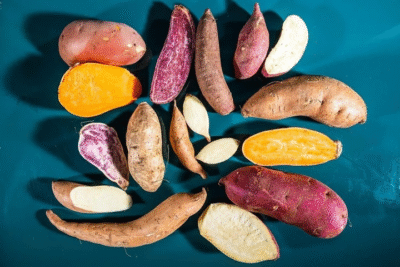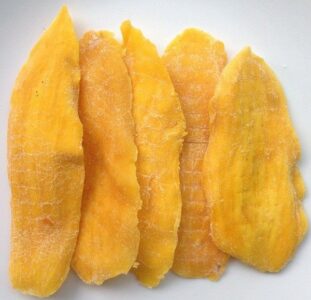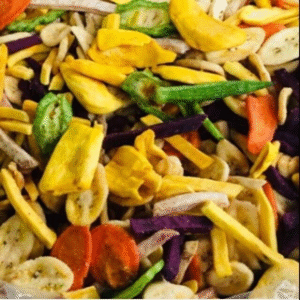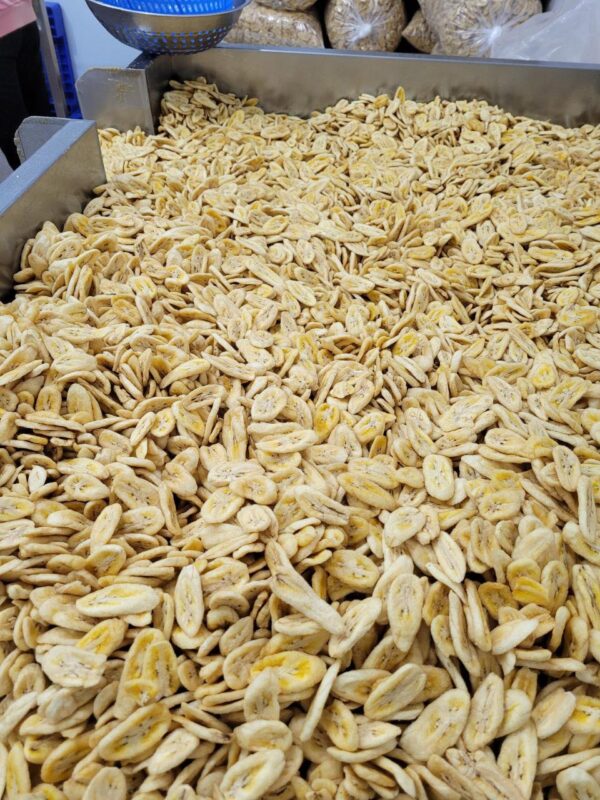Last updated on October 28th, 2025 at 05:36 am
Introduction
Every year, millions of tons of tropical fruits are converted into shelf-stable dried fruits, offering global brands consistent supply, flavour variety and long shelf life. For instance, the Food and Agriculture Organization (FAO) reports that dehydration of fruit targets a residual moisture of around 10 % to 12 % to ensure brittleness and stability. Open Knowledge FAO
For B2B importers looking for wholesale dried fruits suppliers, the choice of partner in Vietnam can make a significant difference in quality, lead time and export readiness. At Qualitex Global’s dried fruit factory you can source a wide range of dried fruit SKUs under one roof.
Why Vietnam is an Attractive Base for Wholesale Dried Fruits Suppliers
Vietnam benefits from diverse tropical-fruit production zones, well-established processing facilities and competitive access to Asian and global logistics hubs.
Processing data show that tropical fruits with low initial dry-matter content (20 %-40 %) require timely dehydration to minimise spoilage. OECD
A typical Vietnamese facility will handle fresh fruit within 24-48 hours of harvest, slice and pre-treat it, and dehydrate it to a target moisture level of 10-12 % per FAO guidelines. FAOHome
When assessing wholesale dried fruits suppliers, the proximity of farms to ports, access to reliable power and advanced drying technology are key competitive factors.

Key Specifications to Request from Wholesale Dried Fruits Suppliers
Here is a benchmark table you can use when discussing specs with a supplier:
| Specification | Benchmark Target | Why it matters |
|---|---|---|
| Finished moisture (%) | ≦ 12 % | Ensures product stability, prevents microbial growth and preserves crisp texture. Open Knowledge FAO |
| Drying temperature | 55-75 °C (hot air) | Maintains colour and flavour while minimising chemical change. FAOHome |
| Final water activity (aₜ) | ≦ 0.60 | Lower aₜ means longer shelf life and less risk of spoilage. |
| Packaging shelf life | 12–18 months | Indicative for global logistics; convenient for importer planning. |
| Traceability | Farm → Factory → Pack | Enables reputable sourcing and audit readiness for private-label requirements. |
By including these numbers and benchmarks, you establish a clear specification during supplier negotiations.
What to Look for in a Wholesale Dried Fruits Supplier
Certifications and Food Safety Systems
Ask whether the manufacturer holds certifications such as HACCP or ISO 22000. These systems demonstrate preventive management of safety hazards in processing. A credible supplier should provide certificates and audit records.
Processing Technology and Capacity
Verify that the factory uses modern slicing, drying and packaging equipment, and can process fresh fruit within a specified timeline (e.g., within 48 h of harvest). This is important for strength of flavour, colour retention and throughput.
Raw-Material Sourcing and Variety
A strong supplier will source from well-established farms or orchards, ideally having contracts with growers to ensure uniformity in size, maturity and fruit variety. That enables consistent finished-product quality.
Packaging and Private-Label Flexibility
For importers looking to build private-label brands, confirm that the supplier supports flexible bag sizes (e.g., 100 g, 500 g, 5 kg), printing options, barrier film performance and fill-weight consistency.
Export Readiness and Logistics Support
Ensure the supplier provides full export documentation (Certificate of Origin, phytosanitary certificate, etc.) and understands global shipping requirements. Being proactive in packaging, palletisation and transport reduces risk of delays and damage.
Typical Production Workflow for Wholesale Dried Fruits
Here’s a step-by-step view of how a manufacturer handles dried fruit production:
- Fresh fruit reception from contracted farms. The fruit is inspected for size, peel defects and maturity.
- Washing and slicing: Fruit is washed and sliced uniformly (commonly 3-4 mm thickness for crisps, thicker for soft dried styles).
- Pre-treatment: The slices may be dipped in an acid-based solution or sulphured to inhibit browning and retain colour.
- Drying: Hot-air tunnels run at 55-75 °C until moisture target (≈10–12 %) is achieved and slices reach brittle or chewy state, depending on style. OUP Academic
- Cooling and quality check: Moisture, water activity and flavour tests are performed.
- Packaging: The dried fruits are packed in barrier films, filled with nitrogen or vacuum-sealed, labelled for private-label brands and boxed for export.
- Shipment: Logistics aligned with sea- or air-freight export schedules, with temperature controlled if required.
These steps highlight how specification and execution matter for importers seeking reliable supply.
Quality Assurance, Traceability and Importer Checklist
For a successful private-label or bulk dried fruits programme, you should include the following checklist:
- Request and review batch test reports: moisture content, water activity, microbial counts and heavy-metal screening.
- Conduct sensory evaluation of samples: colour, texture, flavour uniformity and absence of off-smells.
- Ask for traceability: can the supplier track fruit origin, processing date, batch number and packaging date?
- Clarify lead times: sample lead time (typically 2-4 weeks), production lead time (4-6 weeks) and shipping schedule.
- Define shelf-life conditions: recommended storage temperature for finished product (often ≤25 °C, RH < 60 %) and performance over time (e.g., 12-18 months).
- Review contract terms: MOQ (minimum order quantity), private-label options, packaging design approval, variation flexibility.
Following this checklist helps reduce risk and ensures importers have clear expectations from the supplier.
Why Dried Fruits Are Gaining Attention in Global Markets
Dried fruits provide an attractive value proposition for snack brands and food-service sectors because they offer long shelf life, rich flavour and nutritional density. One recent nutrition study found that regular consumption of dried fruit was associated with improved diet quality and better blood-pressure metrics. Verywell Health
For importers, this means you can position dried fruits as healthy snack ingredients or private-label standalone items with clean-label appeal.
Conclusion
When sourcing wholesale dried fruits suppliers, prioritise specification clarity (moisture, processing parameters, packaging), supplier capability (modern plant, traceability, certifications) and export readiness (documentation, packaging, logistics). Partnering with a reliable Vietnam-based manufacturer offers strong potential for quality, timely delivery and brand-ready product.
If you want to import premium dried fruits under your own brand, consider discussing OEM/ODM manufacturing and private-label packaging with Qualitex Global as your trusted partner.
FAQ Section
Q1: What finished moisture level should I expect for high-quality dried fruits?
Typically a finished moisture of ≤ 12 % is targeted for brittle dried fruits to ensure stability and shelf life. Low moisture reduces risk of microbial growth and preserves texture. Open Knowledge FAO+1
Q2: How long can wholesale dried fruits be stored before quality declines?
With proper packaging (barrier film, nitrogen flush) and storage conditions (≤ 25 °C, RH < 60 %), shelf life of 12 to 18 months can be achievable. The actual shelf life depends on raw-material quality and processing control.
Q3: What certifications should I verify when choosing a supplier?
Suppliers should hold recognised food-safety certifications such as HACCP or ISO 22000, and provide recent audit records. These systems show that hazard control, hygiene and traceability are managed.
Q4: Why is traceability so important in dried-fruit manufacturing?
Traceability enables you to track from farm to factory to packaging, which supports quality assurance, audit readiness and private-label brand confidence. It reduces risk of counterfeits and strengthens supply-chain transparency.
Q5: What packaging factors should I demand for export-grade dried fruits?
Key factors include multi-layer barrier film with low oxygen transmission rate (OTR) and moisture vapour transmission rate (MVTR), nitrogen or vacuum flush, flexible bag sizes for retail or bulk, and clear labelling for import compliance.








